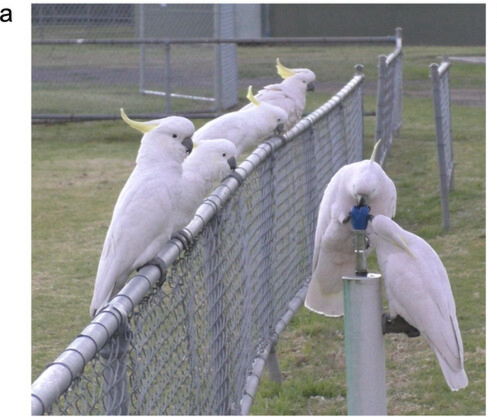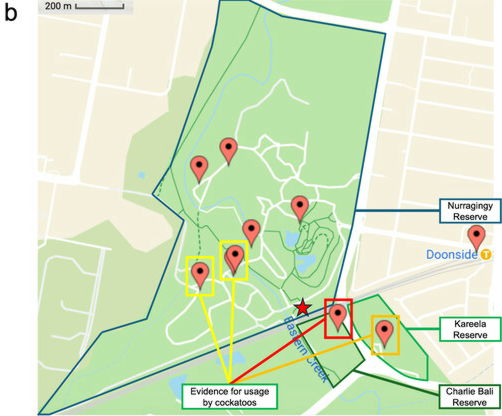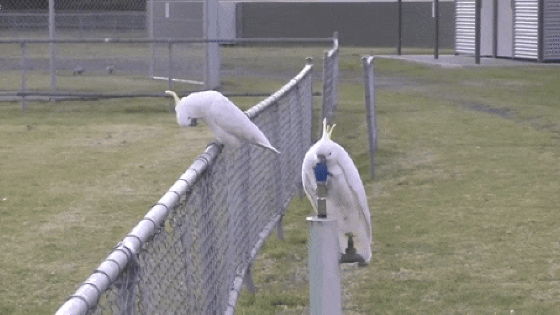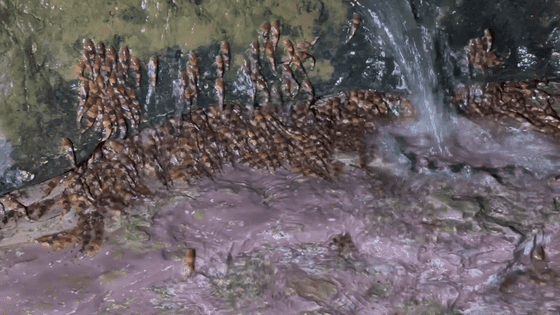Wild parrots have learned how to turn the handle of a watering hole to drink water, and there are even waiting lines at the watering hole.

Sulphur-
Emergence of a novel drinking innovation in an urban population of sulphur-crested cockatoos, Cacatua galerita | Biology Letters
https://royalsocietypublishing.org/doi/10.1098/rsbl.2025.0010

Australian 'trash parrots' have now developed a local 'drinking tradition' | Live Science
https://www.livescience.com/animals/birds/australian-trash-parrots-have-now-developed-a-local-drinking-tradition
Sydney's sulphur-crested cockatoos spotted using drinking fountains - ABC News
https://www.abc.net.au/news/science/2025-06-04/sydney-sulphur-crested-cockatoo-using-bubblers/105365658
Barbara Crump , who studies animal cognition and social behaviour at the Max Planck Institute for Ethology in Germany, was walking in Sydney's west in September 2018 when she spotted a group of sulphur-crested cockatoos queuing up to use a watering hole.
'When she reported this to our research group, we were all very excited and started planning how best to study this unusual behavior further,' study co-author Lucy Aplin , a cognitive ecologist at the Australian National University , told Live Science.
The photo below shows a Sulphur-crested Cockatoo drinking water from a watering hole and a line of them waiting to use the hole. The watering hole was made of concrete and had a rubber lid with a spout embedded in it, and a twist-type handle about 15 cm below the top.

The research team installed two motion-triggered cameras at a watering hole in the Charlie Barry Conservation Area in western Sydney from August 29 to October 11, 2019, and observed the cockatoos drinking water from the watering hole. Prior to the observation, the research team marked 24 cockatoos living in the area so that they could be visually identified.
The map below shows the watering holes in the Charlie Barri Conservation Area where the observations were made. The holes outlined in yellow show where cockatoos had left bite marks on the rubber lids, while the holes outlined in red and orange show where cockatoos were observed drinking directly from. The camera was placed at the hole outlined in red.

The cockatoo was using both feet to operate the handle and putting its weight on it to turn it clockwise, preventing it from returning to its original position, allowing it to drink water.

Analysis of the footage revealed that 525 attempts were made by the Sulphur-crested Cockatoos to drink from the watering hole, with 41% of attempts resulting in successful drinking. In addition, 17 of the 24 Sulphur-crested Cockatoos that were marked attempted to drink from the watering hole (approximately 70%), which means that if there was no bias in marking, approximately 70% of the local Sulphur-crested Cockatoos attempted to manipulate the watering hole.

Aplin speculates that the behavior was probably developed by one particular sulphur-crested cockatoo and then spread to the local population as other cockatoos saw it, but the way each individual operated the watering hole was slightly different, suggesting that each individual has refined the details through trial and error.
'Overall, our study shows that this behavior is widespread and well-established in local bird flocks, with some birds having fully mastered the behavior and others still in the learning stages,' Aplin told Live Science. 'This suggests that drinking from water holes has become a widespread, locally rooted 'drinking habit.''
Related Posts:







